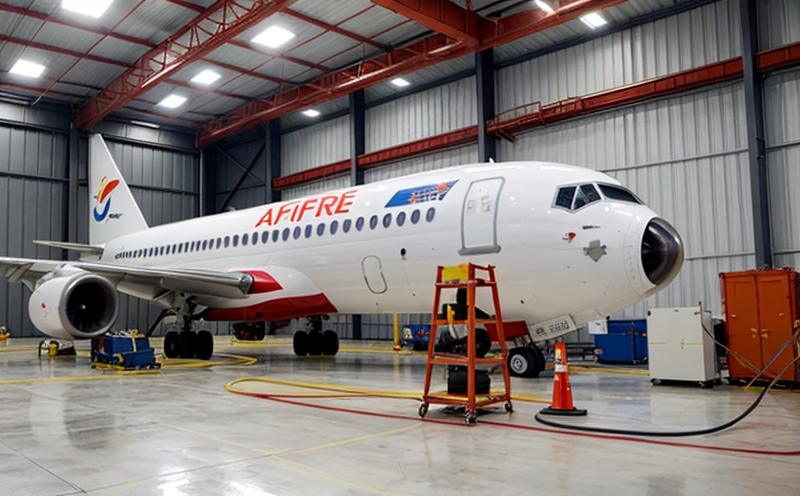Post-Fire Analysis of Aircraft Cabin Components
In aerospace fire safety testing, post-fire analysis plays a critical role in ensuring the integrity and reliability of aircraft cabin components. This service involves a detailed examination of materials, structures, and systems that have been exposed to fire or high-temperature environments following an incident.
The primary objective is to assess the performance of these components under extreme conditions. This analysis helps manufacturers understand how various materials and designs behave in real-world scenarios, ensuring they meet stringent safety standards and regulatory requirements. Post-fire analysis also aids in identifying potential weaknesses or areas for improvement before these components are reintroduced into operational aircraft.
The process begins with the retrieval of damaged components from affected aircraft. These components undergo a series of controlled tests designed to replicate the conditions experienced during the fire event. This includes examining the extent of thermal damage, structural integrity, and any visible or hidden defects that may have arisen due to exposure to intense heat.
Key aspects of post-fire analysis include:
- Evaluation of material degradation
- Determination of residual strength and functionality
- Analysis of fire-retardant properties
- Identification of any changes in chemical composition or physical properties
- Evaluation of potential hazards that could pose a risk to safety during future flights
The findings from post-fire analysis are crucial for enhancing the overall safety and reliability of aircraft cabin components. They inform design modifications, material selection, and manufacturing processes, ultimately contributing to the development of safer aviation systems.
Why It Matters
The importance of post-fire analysis in aerospace cannot be overstated. Ensuring that aircraft cabin components can withstand fire-related events is paramount for maintaining passenger safety and operational integrity. Regulatory bodies, such as the Federal Aviation Administration (FAA) and European Union Aviation Safety Agency (EASA), mandate rigorous testing to prevent catastrophic failures.
Post-fire analysis not only addresses immediate concerns but also sets a benchmark for future improvements in materials science and engineering. By understanding how materials perform under extreme conditions, manufacturers can innovate more robust designs that enhance the overall safety of aircraft interiors. This proactive approach helps airlines comply with international standards and enhances public confidence in air travel.
The insights gained from post-fire analysis are invaluable for:
- Enhancing fire resistance
- Improving structural integrity
- Elevating material quality and reliability
- Reducing the risk of reoccurrence of similar incidents
Applied Standards
| Standard | Description |
|---|---|
| ISO/TS 18401:2015 | International standard for fire safety in aerospace vehicles. |
| American Standard for Testing and Materials (ASTM) E1354-17 | Standard test method for determination of the heat release rate of materials using a cone calorimeter. |
| EASA CS25.806 | European aviation safety regulation covering fire protection in aircraft structures and systems. |
| FED 199A | American federal standard for flammability testing of materials used in aircraft interiors. |
These standards provide a framework for conducting post-fire analysis, ensuring that the tests are consistent and reproducible. Compliance with these regulations is mandatory to ensure that components meet safety requirements and can be confidently reintegrated into operational aircraft.
Quality and Reliability Assurance
- Dedicated quality assurance team ensures adherence to all relevant standards.
- State-of-the-art testing facilities equipped with advanced instrumentation.
- Comprehensive documentation and reporting systems for accurate record-keeping.
- Continuous monitoring of test results against established benchmarks.
We employ rigorous quality control measures throughout the entire process, from sample preparation to final analysis. Our team of experts ensures that every step adheres strictly to international guidelines and best practices. This commitment to excellence guarantees accurate and reliable outcomes for our clients.





